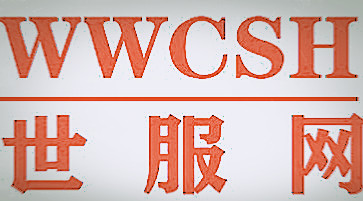Undercurrent Surges: Exports Up To $18 Billion 300 Million! Vietnamese Textile Should Not Be Underestimated!
In the first 7 months of 2019, Vietnam's textile and clothing exports amounted to US $18 billion 300 million, an increase of 10.5% over the same period last year, equivalent to 45.7% of the annual plan. In order to achieve the goal of export volume of US $40 billion this year, enterprises should carry out various measures simultaneously, aiming at enhancing the value, expanding and developing the market.
Statistics from Vietnam textile and Apparel Association show that traditional export markets have been maintained and developed steadily. Exports of textiles and clothing to the United States increased by 12.8% over the same period last year, accounting for 46.9% of Vietnam's textile and clothing exports. The export volume of the trans Pacific Partnership Agreement on comprehensive and progressive agreements (CPTPP) increased 11.1%, or 16.7%, and exports to the EU grew by 10.4% over the same period last year, accounting for 13.3%, while the volume of exports to Korea increased by 5.5%, accounting for 8.9%.
In addition to maintaining stability and developing traditional markets, enterprises are faced with various difficulties, namely, the increasingly fierce competition in prices, the increasing transfer of orders and changes in manpower. The scarcity of orders in some enterprises is only about 70% compared with the same period last year. The scarcity of orders not only occurs in small enterprises, but also in some large scale enterprises. This is regarded as an abnormal signal, contrary to the forecast that the market has improved at the beginning of the year.
Not only that, the incentive competition and the increasing production cost of labor resources are also the concerns of enterprises. It is worth noting that when foreign textile enterprises are transferring to Vietnam to invest and expand production and operation activities, domestic enterprises should also face the problem of transfer of workers to foreign enterprises with better treatment and better salaries. It is predicted that employee resignation will continue from now until the end of the year. Therefore, in the future, it is not easy for investment to expand production and operation activities. It is necessary for enterprises to take measures to attract workers and invest in new equipment and technology at an early date.
On the other hand, in view of the competitive pressure of the market, when the cheap labor force is no longer the advantage of Vietnam, and in addition to the transfer of orders to Kampuchea, Laos, Burma and other regions that have more advantages than Vietnam, Vietnamese enterprises should minimize costs, strengthen management and high quality human resources training, aiming at improving product quality and competitiveness in the market.
Vietnam's signing and implementing the CPTPP, the free trade agreement between Vietnam and the European Union and other new FTA are seen as the prerequisite for enterprises to invest in production, expand the market and promote exports. Therefore, if we want to take advantage of opportunities, enterprises should build up the link from raw and auxiliary materials to improve the quality and price of products at the same time. The production mode is transferred from the sewing order to the FOB production mode (the purchase of raw materials, the sale of finished products) and the ODM production mode (design, production and sale of finished products).
In addition, we should reduce production cost and optimize production management process according to the situation of enterprises. In addition to the efforts of the enterprises, the state should introduce specific and reasonable mechanisms and policies to encourage the development of the textile and garment industry. There are still weak links in giving priority to the industry, especially the bottlenecks in weaving, printing and dyeing. Only in this way can we promote the stable and sustainable development of the textile and garment industry and take a position in the global supply chain.
- Related reading
- Investment leisure | Holidays Do Not Arrive At Clothing, Early Start The Discount War.
- Commercial treasure | Entrepreneurial Observation: Small Commodities Contain Big Business Opportunities.
- College students'Entrepreneurship | Graduates Will Receive At Least 10 Days Of Entrepreneurship Training.
- Entrepreneurial path | Entrepreneurial Success
- News and information | Chinese Shoe Enterprises Become Leaders Of International Standards For The First Time
- Internet Marketing | The Private Express Industry Is Facing The Test Of Life And Death In The Era Of E-Commerce.
- Learning Area | Grasp The Knowledge Of Velvet Knowledge
- News and information | 一季度廣東省出口服裝同期增長
- policies and regulations | 紡織服裝企業信用評價提高品牌競爭力
- Learning Area | 展現男人風采----夏季男款休閑西裝面料
- The Clothing Industry In All Parts Of The Big Clothing Wholesale Market Is Cold, And The Textile Industry Is "Suffering".
- SASAC: Sino US Trade Is Changing. Can China's Textile Industry Leave The United States?
- Technological Innovation: Development Trend And Direction Of New Textile Fiber Materials
- Smoky Smoke: Trembling Voice, Taobao VS, Quick Hands And Numerous Infinite Wars.
- Opportunities For Domestic Brands: "Tide Brand" Force Sports Brand To Usher In A New Growth Point
- The Mid Term Performance Of Garment Enterprises Is "Red" And The Construction Of Online Channels Is The Key.
- Traditional Peak Season Is Hard To Remain: What Is The Most Important Concern Of Textile Boss?
- Vaseline X Pepsi Cola Crossover Joint "Pull Ring Modeling" Lip Balm On Sale.
- There Are Many Negative Factors, And The International Crude Oil Rebound Is Limited.
- Environment: Another Printing And Dyeing Factory In Zhejiang Has Been Dissolved. This Year's Dyeing Mill Business Is Really Bad.




